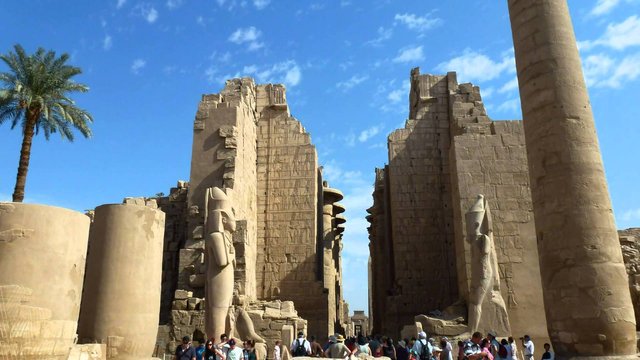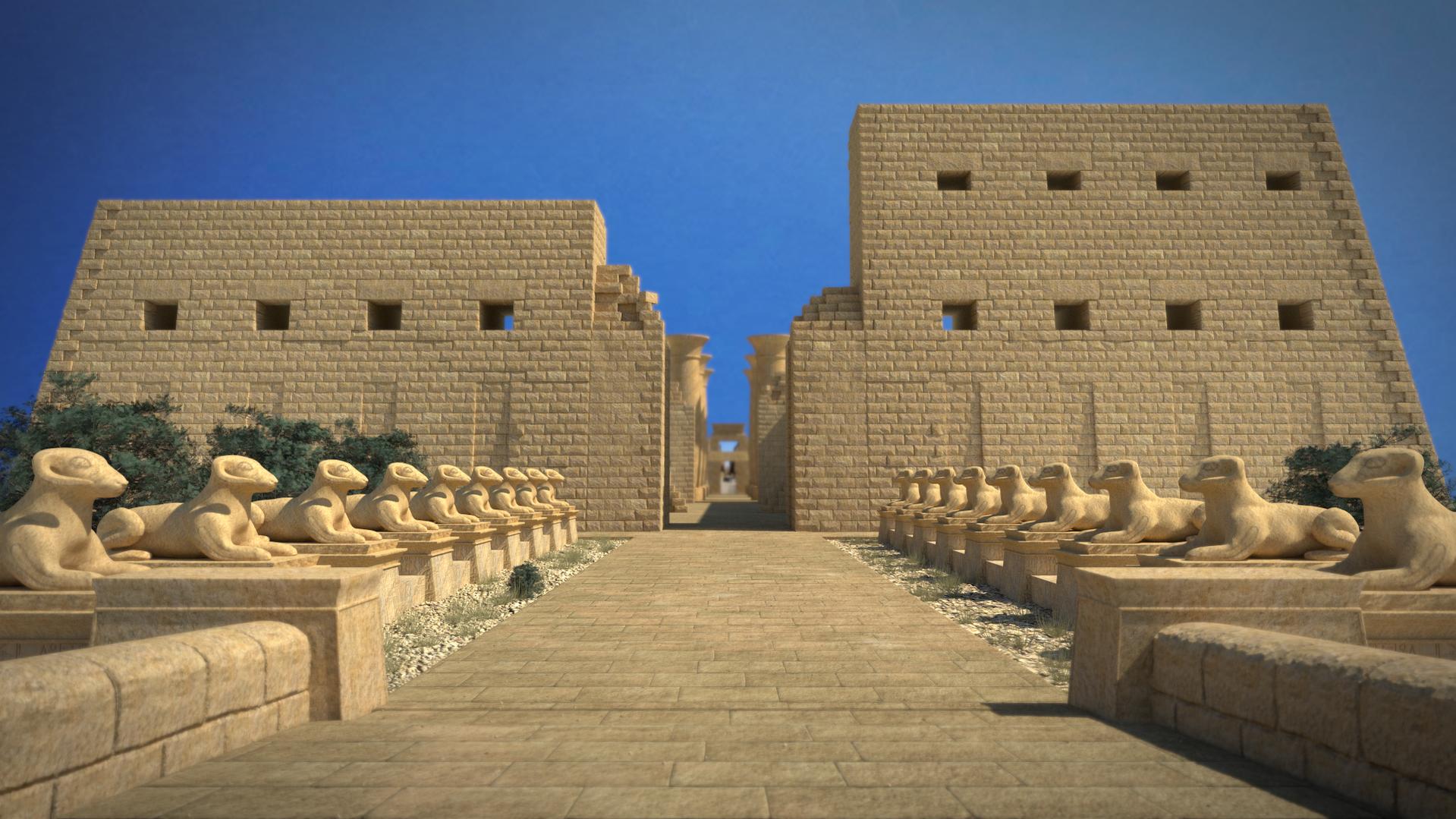come to Egypt @- Invitation to visit EGYPT (report)

Tourism is one of the leading sources of income, crucial to Egypt's economy. At its peak in 2010 the sector employed about 12% of Egypt's workforce serving approximately 14.7 million visitors Egypt, and providing revenues of nearly $12.5 billion.

In Egypt there is many Destinations to visit like :
Luxor’s Valley of the Kings,Cairo , Sharm , red sea ,




.............................................
Luxor’s Valley of the Kings:

Luxor’s Valley of the Kings, the sun is high in the sky at 9.30am and inside the famed 63 tombs it’s starting to get humid. This should be peak time for visitors, but there are few footprints in the dust leading to each tomb. About 50 tourists stroll in and out of the tombs, or fan themselves in the shade. “This is about as busy as it gets,” said Aamer Ibrahim, a Luxor native who has worked in tourism all his professional life. He gestured at a spot about 200 metres from the entrance to the tomb of Ramses IV.
There is a guilty, selfish pleasure in standing alone in the tomb of Tutankhamun, or having the stars and hieroglyphs in the tomb of Ramses IV almost to myself. for an industry reliant on entry tickets to the Valley of the Kings (plus extra to see Tutankhamun’s mummy and gilded sarcophagus), this is a disaster.
At the Sonesta St George in Luxor, once visited by former president Hosni Mubarak, lines of sun loungers await bronzed guests and rows of empty tables fill the restaurants during what should be the start of high season. At the famed Winter Palace, formerly the home of the Egyptian royal family, ornate gold-and-glass chandeliers hang over empty brocade sofas, awaiting visitors. The Winter Palace is currently administered by Sofitel – like the vast majority of large Egyptian hotels, it is funding from a large international chain that keeps the doors open and the staff employed during a downturn this severe.
For its part, Egypt’s government has worked to reopen attractions such as the tombs of King Seti and Queen Nefertari earlier this year, as well as four tombs used to bury royal butlers which reopened in late 2015, but adding to the rich array of attractions has done little to get visitor numbers back to their previous highs.
The economic ripples of this decline reach far beyond the well-known tourist spots. On Luxor’s main Television Street downtown, rows of shoe and clothes shops stand to attention under fluorescent lights, but no one is buying. The Areeka cafe on Television Street could seat up to 100 people, who come to sip ice-cold fruit juice or puff on a shisha pipe, but there are few tables taken. Owner Emad El Nubi says “there is no comparison” between a good day’s business today and pre-2011.
“Everything slowed down. We have no income. Prices have gone up,” he said. El Nubi’s family has also been forced to close their business producing rice, honey and sugar because of a lack of hard currency. The low number of tourists has sent Egypt’s economy on a continued downward spiral, even as the government insists that mega-projects, such as the second Suez Canal channel, would reverse the country’s fortunes. Egypt recently accepted a $12bn loan from the IMF, requiring it to slice further into subsidies and, in all likelihood, devalue its currency for a second time in a year. The result has been price hikes for basic goods and services, not to mention the sudden introduction of VAT, that have hit ordinary Egyptians in the pocket from Aswan to Alexandria.
Reduced numbers of tourists also mean a lack of funds. “Per day, we get maybe 20 people now,” said Samia Abdel Aziz, head of the Luxor Museum.
A drop in visitor numbers is also tied to security. At the Karnak temple, an Egyptian guide gestures to a statue of Ramses II and his wife Nefertari as he conducts a tour in fluent Mandarin, while another leads a group in Russian. There is no shortage of trained guides, but safety remains a concern .

We believes that bringing tourists back is a “three-stage process”: first the Germans, then the Brits – then the Americans, a final sign that things are truly booming again. When a burly American tourist with a GoPro strapped to his head and a camera atop a selfie-stick boards the train to the Hatshepsut temple,
But perhaps the solution to Egypt’s tourism woes lies elsewhere. At the tomb of Horemheb, a ruler known for bringing stability back to the country, visitor Vinod Ramanathan from India said Egypt could easily become a top destination for Indians. “Indians want to travel, as we have more disposable income now, and this is the place for that,” he said. “People need to know about this country, and they don’t right now ... you could have many Indians travelling here.”
Cairo has never had any shortage of hotel rooms, and large hotel chains have continued a steady, if depreciated, flow of business since 2011, mostly from visitors from the Gulf. Visitors to Cairo can choose from over 15,000 brand-name hotel rooms, a 7% growth on 2015, according to a recent report by estate agency Colliers.
Large chains may be able to weather the storm, but Cairo’s smaller venues have suffered, including the much-loved Windsor Hotel in downtown Cairo (double from $50 B&B). “[Business] isn’t good now but at least it’s a little better than before,” said owner Wafik Doss, whose family have owned the Windsor since 1966. “We [have] started having people from all over the world; before it was just Egyptians for some time.”
SHARM EL-SHEIKH



Sharm el-Sheikh was the most popular tourist resort in Egypt and a keystone for tour companies: tour operator Kuoni told the Guardian it has seen “a significant drop in holidays to Egypt in the past five years, and particularly since the suspension of flights into Sharm el-Sheikh.”
Nonetheless, there are hopes that Russia could lift its flight ban on Egypt before the end of the year, and Germany recently restarted direct flights to the popular Sinai resort town. There is little indication yet as to whether direct British flights will resume, although Egypt hired British firm Restrata to train Egyptian airport security personnel across the country, including at Sharm el-Sheikh.
Although the FCO will not currently allow direct flights to Sharm el-Sheikh, it doesn’t prevent tourists from going to the resort, so many simply fly to Cairo and travel on from there.
North of Sharm el-Sheikh, tourism spots previously favoured for being off the beaten track are struggling. Seaside towns like Dahab and Nuweiba, which once played host to many eager British and Russian tourists, as well as others from all over Europe, are now empty of all but the most dedicated visitors. The recent addition of the CoworkInn to Dahab’s collection of cafes and bars is designed to bring back both Egyptian and foreign travellers who feel like working by the beach. Even so, the FCO continues to advise against “all but essential travel” to the two towns, in part because they are closer to North Sinai, which has witnessed a spike in activity since 2013 from Sinai Province, a group now affiliated with Isis.
Along the Red Sea coast, the town of Hurghada was previously popular with Russian, British and German visitors. A report by Capmas found that Russian visits to Egypt were down 60%, British 17.5% and German visits by 10.4% in July this year, compared to 2015. But Hurghada has begun to host many of the foreign visitors put off by travel to Sinai while, further north, the towns of Ain Sokhna and Gouna are increasingly visited by Egyptians looking for a break.
This is the to to visit Egypt

Regards ,
FOLLOW ME @
https://steemit.com/@handsomeman2020
This was an awesome read!! Love to hear about Egypt. It has so much history. Egypt is in the Bible. Watching the Ten Commandments with Charlton Heston was an awesome movie. Some of these pictures make me think of that movie.
thank you so much , nice to hear that :)